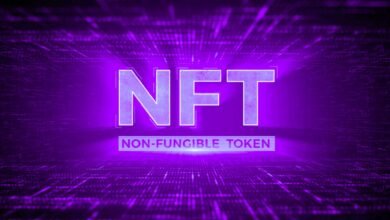
What is Electrum Wallet:
Electrum is among the most widely used Bitcoin wallets. It’s one of a kind in that it straddles the border between beginners’ accessibility and specialist capabilities. This article walks you through the basics of Electrum with step-by-step instructions that emphasize the most significant features for beginners.
It is not necessary to have any prior knowledge of Bitcoin or Electrum. Practicing Electrum is necessary. This tutorial will show you how to determine whether or not you now hold Bitcoin. It’s an instance from the Electrum for Bitcoin Novices book, released soon.
Electrum is a Bitcoin wallet that only stores Bitcoin. It does not recognize any other digital money. This covers any splits of Bitcoin (such as Bitcoin Cash). On the other hand, Cryptocurrency users have modified the Electrum program to enable several BTC splits.
What is a Cryptocurrency Wallet:
A cryptocurrency wallet is a software program that generates a combination of cryptographic codes that are fully randomized. These credentials are being used to transfer and acquire Bitcoin (and other cryptocurrencies) between individuals.
However, the name “wallet” is a little deceptive. Unlike a physical wallet, a cryptocurrency wallet does not keep any funds. The program only communicates with the cryptocurrencies’ blockchain for which the wallet was created. Wallets for cryptocurrencies exist in a wide range of designs and sizes. Some people only have one digital content. However, there are other storefronts. Some are quite safe, while others are not.
Guide to Electrum Wallet:
Step No 1:
Install the Electrum Client on your Computer:
The Electrum client is currently compatible with Windows (7 and subsequent editions), Linux (Ubuntu, Debian, Manjaro.), and MacX. You may also execute it directly from the Python programming language. Experts recommend checking the file signature to install the software, a genuine application edition.
The installation procedure is quite simple. All you have to do now is run the executables and follow the on-screen instructions to complete the installation. If you want to execute the Linux AppImage, you’ll need to use the CLI to render the file compiled code.
Step No 2:
Give your Wallet a Name:
The Electrum client would save the various pieces of information on your PC in an a.dat document. This file contains your personal and personal credentials and transaction information, client labels, and other information. The standard wallet document is called the default wallet and is placed in the /wallets folder of the data dir. It is generated when you initially launch the program.
Make a Fresh Wallet:
Electrum supports a variety of wallets, including:
Standard wallet:
A probabilistic wallet with only one encryption key for each recipient and no further security options
Two-factor authentication wallet:
This is a regular wallet with an added level of protection. A distant server that acts as a co-signer on transactions offers an extra layer of protection if your computer is hacked.
Step No 3:
Wallet with Several Signatures:
This is a common utilization if you want to collaboratively handle funds, such as if you and a friend run a firm together again, and certain assets should only be used if you both accept. Another advantage is privacy; one wallet may have been on your primary machine and another on an offline machine. This makes it extremely difficult for an adversary or software to take your cash.
Step No 4
The Storage of Keys:
A seed phrase, also known as a seed restoration phrase, backup seed phrase, or mnemotechnic pass, is a collection of syllables that must be remembered to restore Bitcoin cash. Electrum, for example, will produce a seed phrase and urge the customer to type it down on paper. If a customer’s computer crashes or their hard drive gets corrupted, they may reinstall the wallet program and restore their bitcoins using the paper backup.
Select the sort of location you want to use.
Your key will determine your wallet’s address. Addresses can be of two types when utilizing the Electrum client:
Segwit is the most current and widely used Bitcoin address format, as defined by BIP141.
Step No 5
The Initial Address Format is Known as a Legacy:
Although the Segwit address format should be preferred, technical issues with older Bitcoin clients or wallets may force you to utilize the traditional format.
Make your seed and back it up.
The seed is a crucial stage in creating a unique Bitcoin wallet.
The seed is a mnemonic code that allows you to unlock your wallet, transact, and withdraw your cash. You can lose your Bitcoins if you forget this phrase!
This is your personal and confidential seed. Please make a careful note of it and save it somewhere secure! That’s all you’ll have to get your Bitcoin wallet back.
Step No 6:
Encryption of the Wallet Data (.dat)
Your.dat wallet document contains some important information.
The wallet document can be stored on a disc for safety reasons. Please keep in mind that the wallet data will stay unlocked in your desktop’s storage for the length of your session. If a wallet is password-protected, the key is needed to enter it.
Step No 7:
Make a copy of your Bitcoin wallet
Finally, what do you require to back up in addition to avoiding losing your valuable Bitcoin or restoring your wallet to a different computer?
The seed and password are simple to remember. However, files with your secret keys should be kept on your computer. This is a significant danger since you might be infected with a virus or anything similar.
Final Verdict
Electrum has a fantastic information section where you can discover more about this amazing software wallet! Electrum’s main website, Read The Docs, is a shop for all you need to know about Electrum, ElectrumX, seeds, wallet encryption, multi-signatures, etc.
Electrum strikes an excellent combination of usability and functionality. After reading this book, each client must be familiar with collecting money, transferring funds, importing a paper wallet, backing up, and recovering a backup.
Electrum and Bitcoin have a lot more features than the ones listed here. They will be introduced in later articles. The e-book Owning Bitcoin covers expert Electrum usage, especially cold storage.







